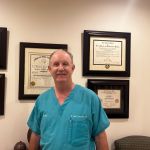Nose job surgeon can help you achieve natural-looking results
Charlotte’s top nose job surgeon can help you achieve a youthful appearance and natural-looking results. Rhinoplasty, commonly known as a nose job, is a cosmetic surgical procedure that reshapes the nose to enhance its appearance or improve its function. While the goals of rhinoplasty remain consistent across different age groups, the approach and considerations vary significantly between younger and older patients. This article explores how rhinoplasty differs at age 16 versus age 60, highlighting the unique aspects and considerations for each age group.
Rhinoplasty at 16
Rhinoplasty for teenagers, particularly at age 16, is often driven by aesthetic concerns and psychological factors related to self-image and social interactions. Here’s how nose jobs differ for adolescents:
1. Developmental Considerations:
- Facial Growth: At age 16, facial structures, including the nose, are still developing. Surgeons must consider the ongoing growth and development of the facial bones and tissues when planning the procedure.
- Maturity: Emotional and psychological maturity are critical considerations. Surgeons assess the teenager’s motivations for surgery and ensure they have realistic expectations about the outcomes.
2. Common Goals:
- Correction of Nasal Proportions: Many teenagers seek rhinoplasty to address concerns about nasal size or shape that they feel detract from their overall facial harmony.
- Improvement in Self-Confidence: Enhancing self-esteem and confidence can be significant motivations for teenagers undergoing rhinoplasty.
3. Surgical Techniques:
- Conservative Approach: Surgeons often take a conservative approach to ensure minimal alteration of the nose, respecting the ongoing growth and avoiding potential complications in future growth phases.
- Closed Rhinoplasty: To minimize scarring and achieve subtle changes, closed rhinoplasty (internal incisions) is commonly preferred over open rhinoplasty.
4. Post-Operative Care and Monitoring:
- Follow-Up: Close monitoring and follow-up care are essential to track healing progress and ensure optimal results, especially considering the patient’s ongoing growth.
Rhinoplasty at 60
Rhinoplasty for individuals aged 60 and above is typically approached with different considerations due to physiological changes and health concerns associated with aging:
1. Health Considerations:
- Medical Evaluation: Pre-operative medical evaluations are crucial to assess overall health and ensure the patient can tolerate anesthesia and surgery.
- Skin Elasticity: Aging leads to reduced skin elasticity and thinner tissues, which can affect surgical outcomes and recovery.
2. Functional and Aesthetic Goals:
- Functional Improvement: Older patients may require rhinoplasty not only for aesthetic reasons but also to address functional issues such as breathing difficulties due to nasal obstruction.
- Aesthetic Enhancement: Improving the appearance of the nose remains a primary goal, often focusing on rejuvenation rather than dramatic changes.
3. Surgical Techniques:
- Open Rhinoplasty: Surgeons may opt for open rhinoplasty to have better visibility and control during surgery, addressing both cosmetic and functional concerns effectively.
- Cartilage Support: Reinforcement techniques using cartilage grafts may be necessary to support the nasal structure and achieve desired outcomes in older patients.
4. Recovery and Long-Term Results:
- Extended Recovery: Older patients may experience a longer recovery period due to slower healing processes. Surgeons provide detailed post-operative care instructions to promote healing and reduce complications.
- Long-Term Considerations: Considering the patient’s age, surgeons focus on achieving natural-looking results that complement facial features and age gracefully.
5. Psychological Considerations:
- Life Experience: Older patients may have clearer motivations for undergoing rhinoplasty, often driven by long-standing concerns or desires for self-improvement.
- Realistic Expectations: With maturity comes a better understanding of realistic outcomes. Surgeons and patients alike prioritize achieving natural-looking results that harmonize with the overall facial appearance.
6. Specific Aesthetic Goals:
- Rejuvenation: Many older adults seek rhinoplasty to achieve a more youthful appearance. This can involve addressing nasal humps, drooping tips, or asymmetry that has become more pronounced with age.
- Subtlety: Unlike younger patients who may seek more dramatic changes, older patients often prefer subtle refinements that enhance rather than drastically alter their facial features.
7. Health and Safety Considerations:
- Medical History: Comprehensive medical evaluations are critical to assess the risks associated with surgery and anesthesia, taking into account any pre-existing medical conditions.
- Skin Condition: Aging skin may be less elastic and more prone to complications such as delayed wound healing. Surgeons tailor their techniques to minimize these risks.
8. Surgical Techniques and Approaches:
- Precision and Expertise: Due to anatomical changes and potential fragility of tissues, surgeons approach rhinoplasty in older patients with precision and expertise.
- Combination Procedures: Sometimes, rhinoplasty is combined with other facial rejuvenation procedures, such as facelifts or eyelid surgery, to achieve comprehensive facial harmony and rejuvenation.
5. Long-Term Results and Recovery:
- Patience in Recovery: Older patients may need more time to recover fully from surgery. Surgeons emphasize patience and adherence to post-operative care instructions to ensure optimal healing and results.
- Longevity of Results: While aging continues after rhinoplasty, the results are designed to be long-lasting. Careful planning and execution aim to provide enduring improvements that age gracefully with the patient.
Conclusion
Rhinoplasty is a highly personalized procedure that evolves with the patient’s age, health status, and aesthetic goals. Whether undergoing surgery at 16 or 60, patients benefit from advancements in surgical techniques and individualized treatment plans that prioritize safety, natural-looking results, and improved self-confidence. By understanding the unique considerations and outcomes associated with rhinoplasty at different ages, patients can make informed decisions and achieve satisfying outcomes that enhance their facial harmony and overall well-being throughout their lives.
Hire Charlotte’s top nose job surgeon
Contact Dr. Sean Freeman at Only Faces, Charlotte’s most experienced rhinoplasty surgeon and top facial plastic surgeon, to schedule a consultation to find out what procedure is right for you. Call today.


